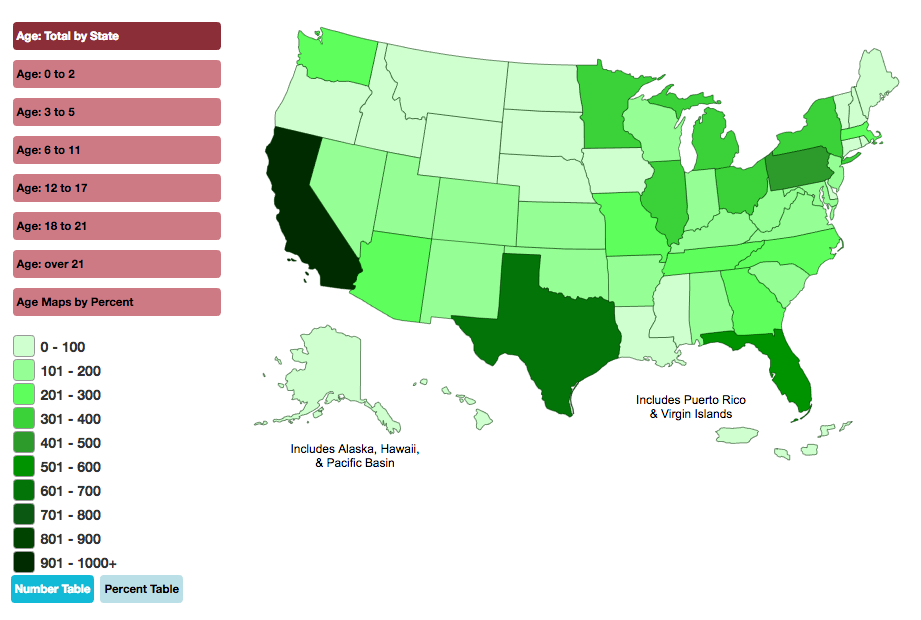Where is Everybody?
Starting a national dialogue on finding children with Usher syndrome
January 20, 2017
by Nancy O’Donnell, Director of the USH Trust, the Coalition's international registry of individuals with Usher syndrome
The USH Trust is a database of individuals of all ages and with all types of Usher syndrome. It was created because researchers told us that, although they could definitely investigate treatments and probably find a cure for retinitis pigmentosa (RP), the vision loss associated with Usher syndrome, their research was jeopardized because they could not find enough individuals to participate in clinical trials.
No trials, no treatments, no cure.
The first time I heard this, I thought to myself, “Where is everybody?”
Outreach is part of my job, so a natural place to start looking for answers was with the younger generation of families with children with Usher syndrome. In the United States, we are fortunate to have a national technical assistance center known as the National Center on Deaf-Blindness (NCDB), which is funded by the Department of Education. NCDB works to improve the quality of life for children who are deaf-blind and their families. Every year, on December 1st, state and multi-state deaf-blind projects take a demographic “snapshot” of deaf-blind children eligible for services and report those numbers to NCDB. NCDB then compiles a fabulous report, providing a detailed demographic overview of the children served. Although the actual number of children receiving services nationally is often higher than the numbers reported on December 1st, this data point serves as a consistent annual barometer of the deaf–blind children’s population.
So it was only natural that the first place I looked for an answer to my question was at NCDB’s annual child count.
In 2015, NCDB reported 9,574 deaf-blind children, birth to 21.
Of those 9,574 children, how many do you think were reported with Usher syndrome, the leading genetic cause of combined vision and hearing loss?
295.
(Is it me or does that number seem very, very low?)
There are reasons, of course, why this number is low and I’ll be addressing those in a webinar hosted by NCDB on January 25th.
But I still have to wonder…how many kids are there with Usher syndrome in the United States?
I went back to our USH Trust to check how many children, birth to 21, we have registered:
180.
Even lower.
I then decided to take a shot at calculating how many kids should, according to researchers’ estimates of prevalence, have Usher syndrome. I’ll share my results in the webinar. (Hint: It’s more than 295.)
Usher syndrome is a rare disease, but not as rare as these numbers would lead us to believe. There is a large community of individuals, and parents of children, with Usher syndrome, who want to connect, who want information and support.
Why We Need to Find Everyone
The Usher Syndrome Coalition does not do research. We are the bridge connecting the research community and the Usher syndrome community worldwide. And although researchers are paying a lot of attention to genetic testing, treatments and a cure, there are other research questions that have recently been raised, such as whether there is a connection between the genes that cause Usher syndrome and genes that cause other health issues. In 2015 the Usher Syndrome Coalition contacted everyone in our registry to let them know about a survey being conducted by a researcher investigating a possible connection between Usher syndrome and another genetic disease. Mark Dunning blogged about it. While it’s great that we got such a quick and enthusiastic response, the sample size was not large enough to come to a reliable conclusion. In other words, to get answers to these important questions, we need more people. With a robust registry, these questions and others can be asked and answered quickly.
Information. Education. Research. Support. Treatments. Cure.
Together, we can do that.
Young families and children have a lifetime to benefit from these resources, if we can only find them.
In case you missed it, here's the recorded webinar from January 25th.








